
This page is best viewed in landscape
Ralph Cowan was born in the Maryhill district of Glasgow on 10th January 1904 the eldest son of John and Elizabeth (née Stephens) Cowan. His father and grandfather, after whom he was named, worked for various glass firms in the city including Meikle and Son and A. S. Wright.
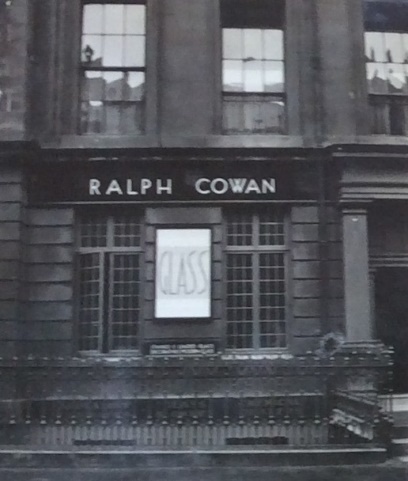
Having learnt his trade from his father he set up his own business at 46 West Princes Street with the modest sum of £24. He was twenty-one.
Although he had left school at 14, he always said that his further education was thanks to the Mitchell Library (he remained an avid reader for the rest of his life) and his mentor in the Boys Brigade, Dr Fergus Henderson, an early pioneer of radium treatment, who saw the potential in him as a young man.
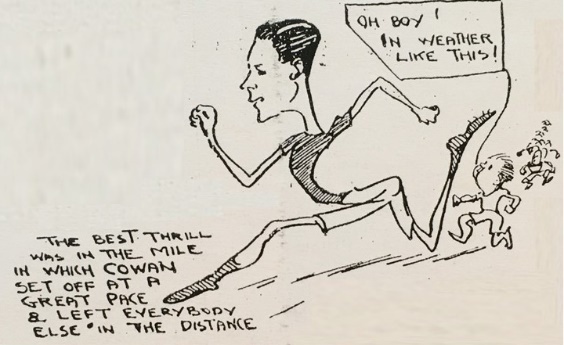
As well as his evident artistic talents, he also showed great potential as an athlete most notably winning the mile at Hamden Park in 1923 and even meriting a cartoon of his success in the Daily Record newspaper. But in those days, there were no grants or funds available to him so Ralph gave up his promising athletics career to concentrate on his design studio.
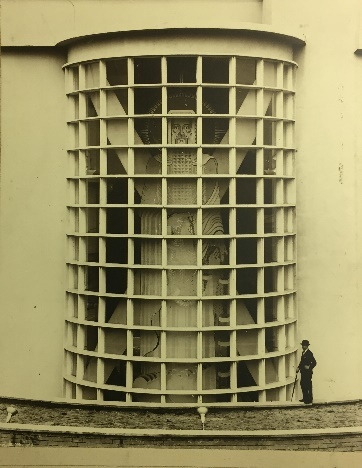
His first commission was to make glass screens for Cuthbertson’s Music shop. There followed work for Gibb the piano people and the architect Mr Atchison working for Thomas Lipton. He received further assignments from architects and interior decorators in the city and in 1935 he held a very successful exhibition of his etched glass at the McLellan Galleries in Glasgow. Work for the Piccadilly Club and other public places followed.
In 1938 he won a commission to design a 46ft panel in etched and sandblasted glass of St Andrew for the Basil Spence pavilion at the Empire Exhibition held in Bellahouston Park in Glasgow.
He also created stained glass work for churches that were built for that exhibition.
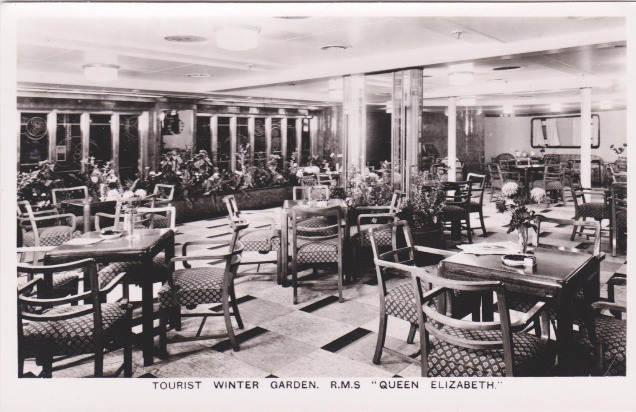
Around this time, he designed a large etched glass screen entitled "The Birth of Life" for the Winter Gardens on the ocean liner RMS Queen Elizabeth.
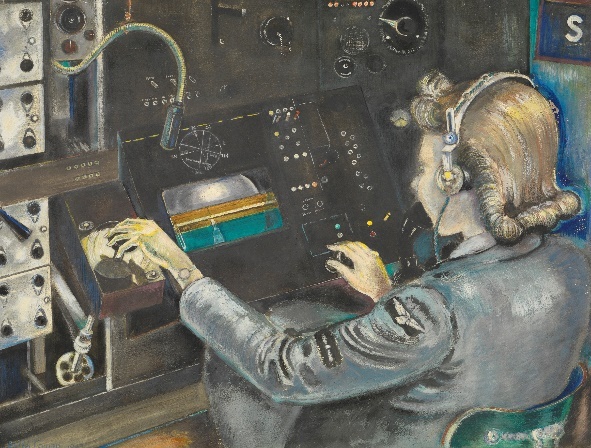
At this point war intervened and he was drafted into the RAF where luckily his artistic skills were recognised and used to illustrate instruction manuals for guns. He was later transferred to working in radar but in his free time continued to paint and draw. His unit was being sent to Burma and Ralph was already kitted out when his work came to the attention of the wing commander and radar specialists. As a result, he was taken off the draft.
He continued to draw and paint throughout this period. The war paintings that survive illustrate radar installations and operators at work.
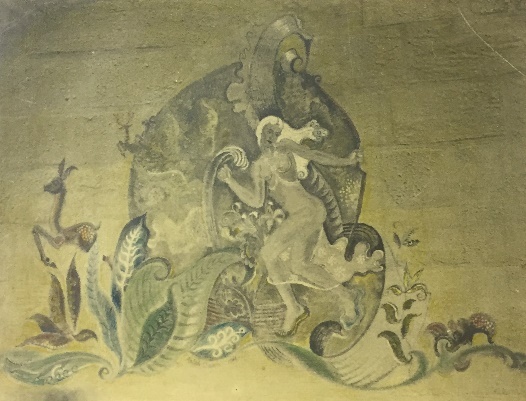
Also, a mural for the NAAFI canteen at Start Point in Devon.
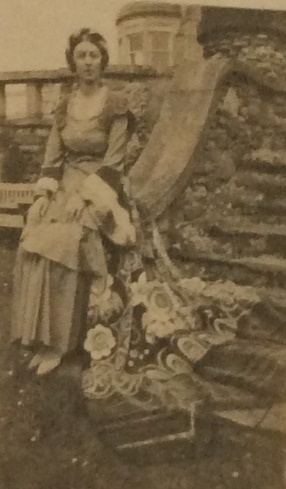
In 1935 he had married Nita Sillars a teacher of speech and drama. They were both committed members of the Glasgow’s Curtain Theatre a semi-professional theatre company (several actors and playwrights went on to become nationally recognised such as Duncan MacRae, Paul Vincent Carroll and Molly Urquhart). There he directed, acted and designed sets for plays.
Earlier in his career he had designed costumes and also directed plays for the Glasgow School of Art Association.
The war intervening when it did completely changed the direction his life was to take. This was a difficult time in his career. His business was no longer viable. Of his 10 employees many had not survived so he returned to the Glasgow School of Art where he gained his diploma and after a year at Jordanhill Teacher Training College he was appointed as an art teacher at the prestigious Allan Glen’s School in 1949. He embraced teaching with enthusiasm and always said that to be a teacher was a privilege.
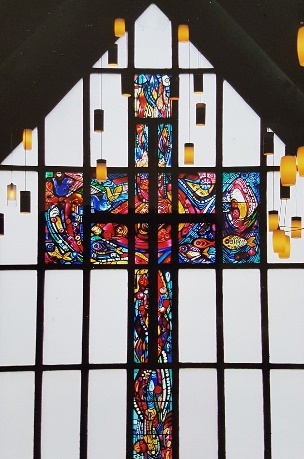
However, he remained a practicing artist during his twenty-three years at the school. In the 1950s his major focus was on stained glass and he won commissions for several churches including the Broom Church in Newton Mearns. His use of colour was influenced by Chagall and Georges Rouault.
He also designed etched panels and murals for several ocean liners . It was at this time he began his Christmas card tradition. He would send around a hundred individually crafted each year an endeavour he kept up for fifty years.
In 1956 the family moved from Kings Park in Glasgow to Uplawmoor near Barrhead where he was able to have a studio in the garden. Teaching afforded long summer family holidays many spent in Arran and the Western Isles; some water colours survive from this time. As the sixties progressed his focus returned to painting stimulated by an impressionable holiday in Morocco where he was greatly moved by the intense colour of the landscape.
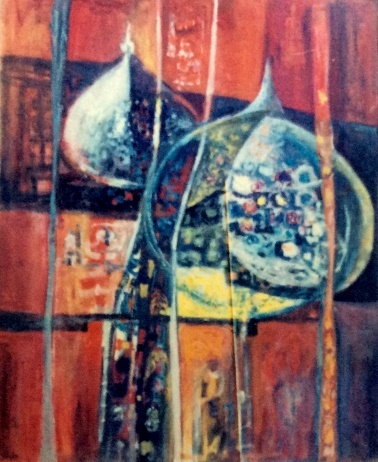
As an artist primarily motivated by colour he looked to Rothko as well as the impressionists particularly Matisse and Van Gogh for inspiration. Later in the decade and while he was still teaching, he launched his return to painting with a successful exhibition of early abstracts at the Alwin Gallery in Mayfair, London.
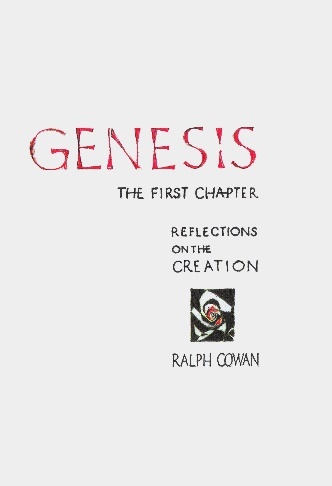
He retired in 1972 three years after the official retirement age (the education department forgot to check!) and is remembered fondly by many of his former pupils. He was now free to concentrate on painting. What followed was an intensive work period that lasted nearly thirty years. There were many landscapes and abstracts (later) but also paintings with a religious theme – the 12 disciples and sixty paintings illustrating the first chapter of Genesis.
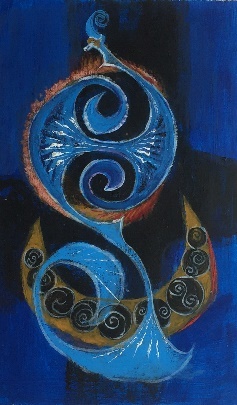
In 1973 he received a commission from the Bank of Scotland in Gordon Street Glasgow to produce 29 paintings and 6 wall hangings to decorate the bank’s premises. Many of these were on a Celtic theme. The bank’s customers were therefore able to enjoy an art exhibition while attending to their financial transactions! These were later sold by the bank.
He entered a number of tapestry competitions coming second in the Robert Love Bequest textile design competition for Glasgow cathedral.
From 1967 to 2000 his work was shown in 30 exhibitions.
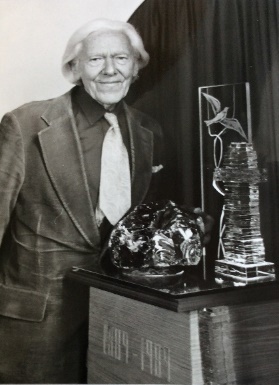
He produced two glass sculptures, one for the Royal Faculty of Procurators in Glasgow and one for Caldwell parish church.
He produced Christmas cards for Allan Glen’s school and for the Iona Community.
In the text and illustrations for the books he produced for his grandchildren he searched for the essence of the subject in his abstract paintings and celebrated his love of astronomy and the natural world in his landscapes. Music was a constant inspiration.
His work can be found in many private collections both nationally and internationally and the Glasgow Galleries (Glasgow Life) has a considerable archive of his work. His pictures owned by public institutions can be found in the Public Catalogue Foundation.
His last solo exhibition of paintings was in the Royal Scottish Academy of Music and Drama in Glasgow when he was 96 years. After this, failing sight made painting impossible. There was however an irrepressible drive to create – he turned his hand to poetry even having one published in the Glasgow Herald!
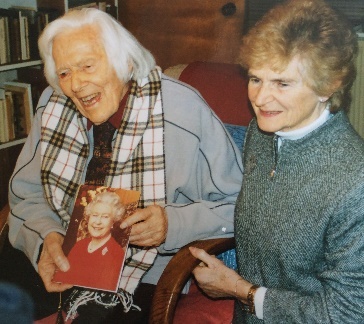
He celebrated his 100th birthday in January 2004 and was represented with a telegram from the Queen delivered by the Deputy Lord Lieutenant Queen’s representative for Renfrewshire.
He died on 31st December 2004; ten days short of his 101st birthday. A small Gallery in the present City of Glasgow College which has been built on the former site of Allan Glen’s School is named after him.